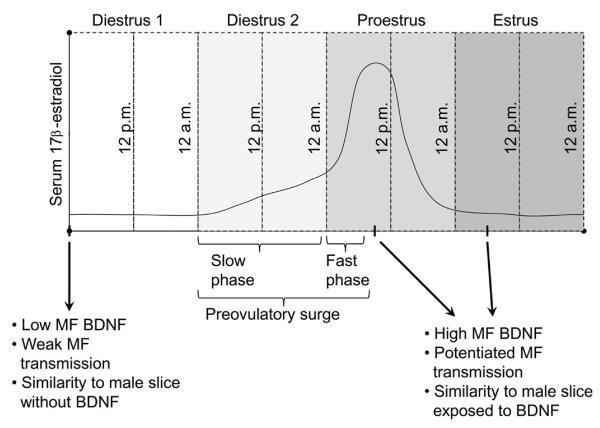Figure 4.
Estrous cycle-dependent changes in mossy fiber BDNF and excitability evoked by mossy fiber stimulation. A schematic is shown that illustrates the four days of the estrous cycle in the adult female rat. Serum levels of 17β-estradiol are illustrated to show the slow and fast phases of the preovulatory surge in serum levels of 17β-estradiol. BDNF protein levels and mossy fiber-driven effects in area CA3 are weak when serum levels are low, and have been low for at least 24 hrs, which occurs on diestrous 1 morning (arrow; this day is also called `metestrus'). In contrast, at the peak of the preovulatory surge, which occurs mid-morning of proestrus, BDNF protein levels are higher in mossy fibers and responses to mossy fiber stimulation are increased. High BDNF levels and increased excitability appear to persist for 24 hrs, because they also are evident on estrous morning (Scharfman et al., 2003).

